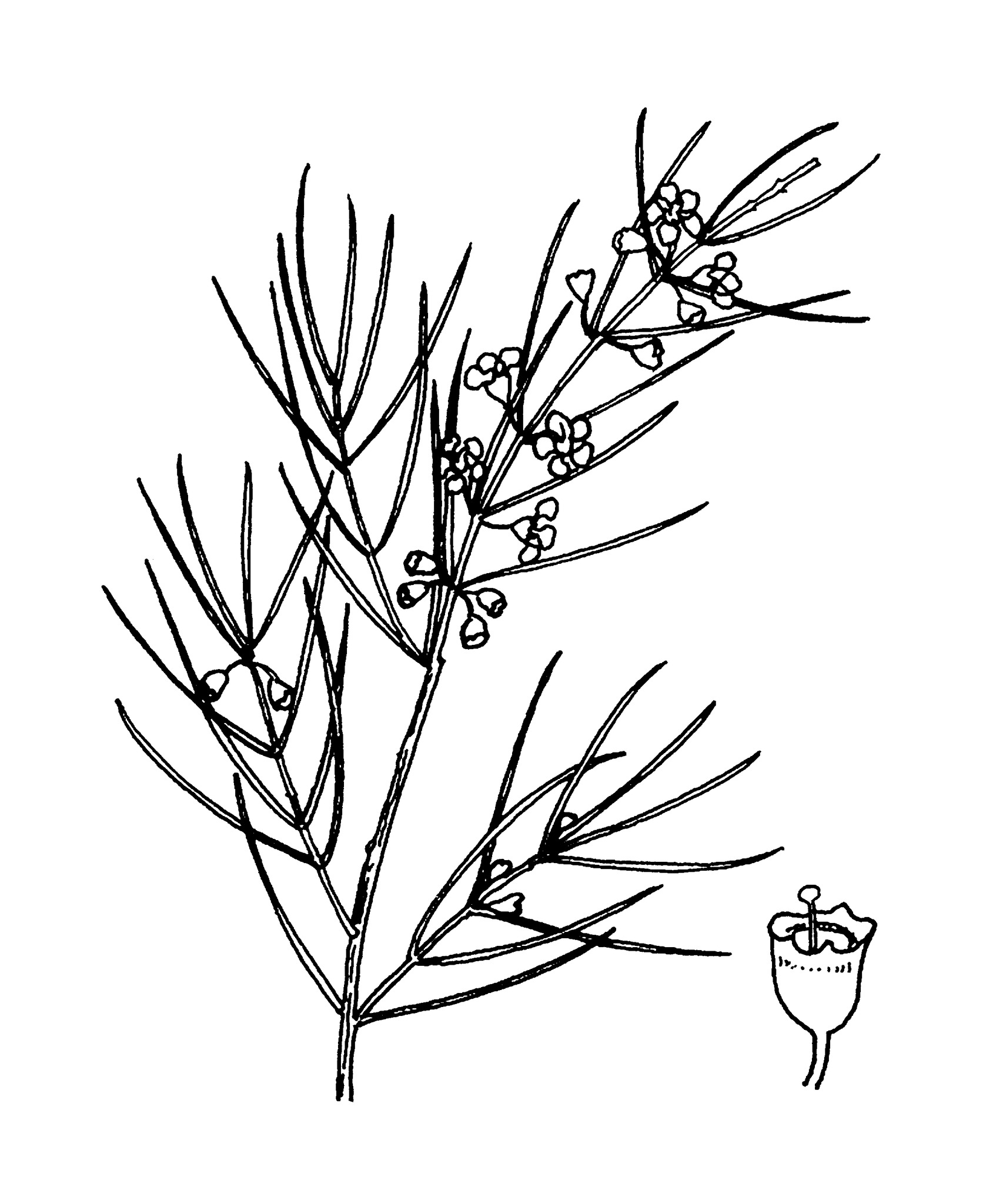
Commemorating Dr Abraham Baeck (1713–95), Swedish naturalist and physician.
Prostrate to tall shrubs. Leaves opposite, entire or toothed, shortly stalked. Flower clusters axillary, occasionally solitary. Flowers 5-parted, white to pink. Calyx persistent in fruit. Petals free. Stamens 5-many, anthers gland-tipped. Ovary half-inferior, 2(-3)-chambered. Fruit a loculicidal capsule.
Grown for the masses of flowers and usually neat foliage.
A number of species formerly in Baeckea have been placed in Babingtonia. Some species listed here are likely to undergo further revision.
The following species are fairly rare in cultivation: B. gunniana Schauer, Alpine Baeckea, from montane NSW, Vic and Tas, generally more or less prostrate with crowded leaves and white flowers; B. imbricata (Gaertn.) Druce from NSW and Qld, with close-set rounded leaves and solitary white flowers in late spring and summer; and B. utilis Miq., Mountain Baeckea, from NSW and Vic, a shrub to 3 m tall with elliptic to oblanceolate leaves and solitary white flowers in summer.
14 species (13 from Australia, 1 extending to Malesia and S China).
Seed or cuttings.
Baeckea has mostly 2-chambered ovaries and free stamens with versatile anthers splitting longitudinally, while Babingtonia has 3-chambered ovaries and anthers rigidly attached and opening by pores or short slits. Astartea is similar but has stamens in 5 bundles arranged opposite the sepals.
Bean (1997b).
Source: (2002). Myrtaceae. In: . Horticultural Flora of South-eastern Australia. Volume 3. Flowering plants. Dicotyledons. Part 2. The identification of garden and cultivated plants. University of New South Wales Press.
